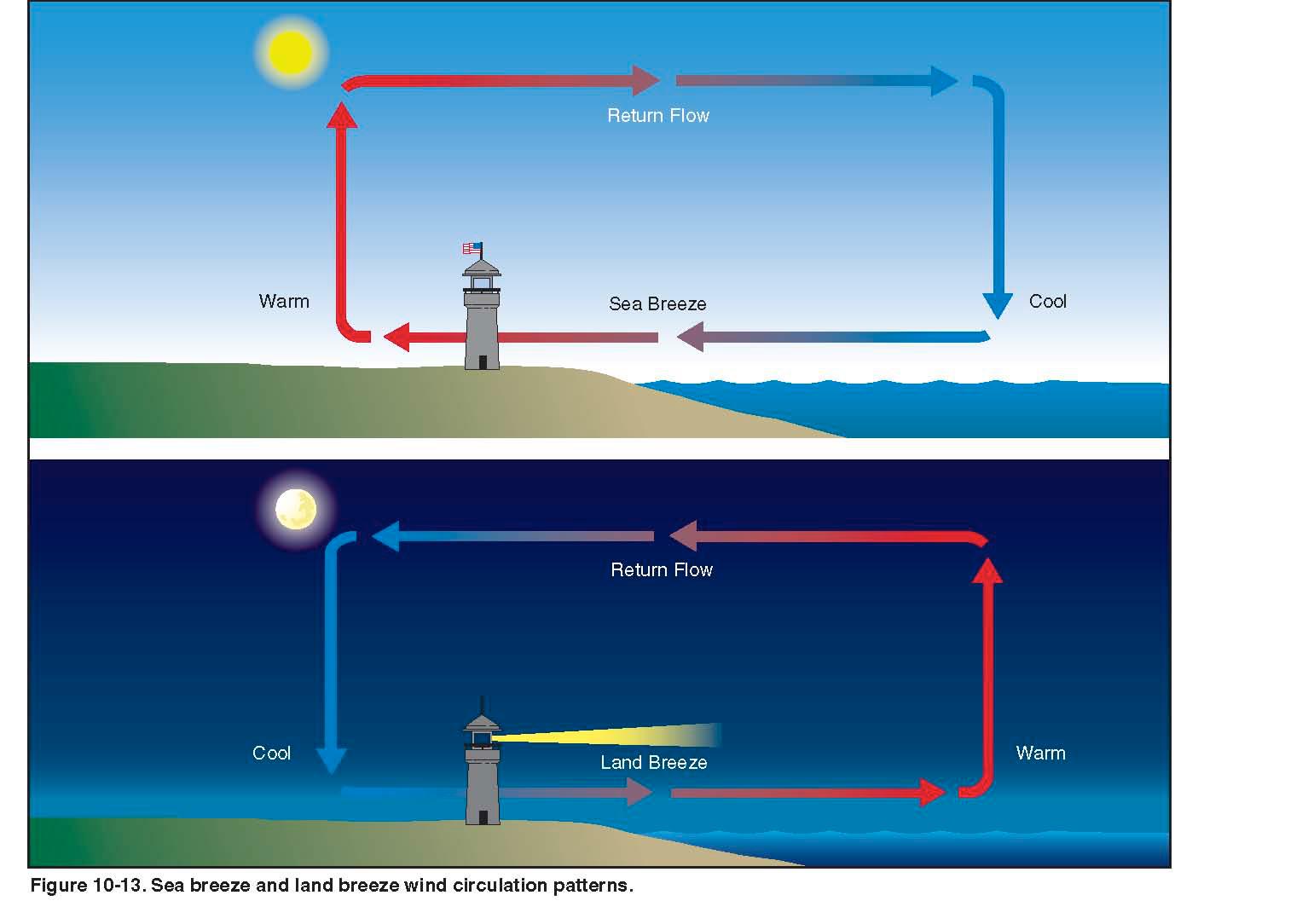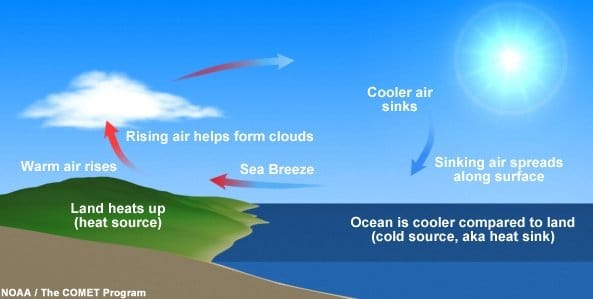

At this level, the air pressure and density, being greater than the same elevation over the water, causes air to flow back over water (5). Typically, this occurs from 3,000 to 5,000 feet (1,000 to 1,500 meters) in elevation.

This cooling means the density increases again, forming a small area of high pressure (4). Over land, air forced up by the sea breeze front will begin to cool. The skies also clear and humidity increases after the sea breeze front passes, and there can be a significant change in wind direction and/or speed. This boundary, called a sea breeze front, acts in the same manner as the cold fronts often associated with a line of storms (when a cooler, denser air mass advances and replaces a warmer air mass, resulting in quick, significant temperature and weather changes).įor example, the air temperature drops significantly after the sea breeze front passes a location, sometimes as much as 15-20 ☏ (8-11 ☌). A sharp boundary develops due to the large difference between the air temperature over land and over water. This inland push of air from the ocean undercuts the less dense air over land, forcing it to rise (3). Over the adjacent water, the cooler, more dense air is pulled down by gravity and begins to spread inland (2). As the air warms, its density decreases, creating a weak low-pressure area called a "thermal low" (1). However, since the ground's heat remains confined to the top few inches of soil, it radiates back into the atmosphere, warming the air. The sun warms both the ground and ocean at the same rate. These two flows are a result of the difference in air density between the land and sea caused by the sun's heating. The sea breeze circulation is composed of two opposing flows, one at the surface (called the sea breeze) and one aloft (which is a return flow). For coastal areas, this difference of heating can have a large impact on the weather by the formation of the sea and land breezes. Consequently, temperature fluctuations between daytime and nighttime are much greater over land than over water. In contrast to the ocean, the sun's rays do not to penetrate deep into the Earth but are confined to the top few inches of soil. The constant turbulence from wind and weather continually mixes the water, distributing surface heating through the water column.In clear tropical water, light can reach a depth of 500-650 feet (150-200 meters), meaning that it takes a great amount of heat to raise the temperature through such a large volume of water, and The transparency of the water, which allows the sun's rays to penetrate deep into the ocean.The ocean's ability to absorb and store energy from the sun is huge. Preparedness and Mitigation: Individuals (You!).Preparedness and Mitigation: Communities.The Positive and Negative Side of Lightning.Included in the list of IBA official cocktails. Department of Health stated that cranberry crops were tainted with toxic herbicides, collapsing the cranberry industry.

Starting in the 1960s, the breeze drinks were sporadically in the top ten most popular mixed drinks.Īccording to some, the Sea Breeze, along with the Cape Codder and Bay Breeze, did not become very popular until the 1970s. The Harpoon, later called the Cape Codder, was born, and its descendants such as the Greyhound, the Salty Dog, the Bay Breeze, and the Sea Breeze were later created. Cranberry juice was used as a mixer with alcohol, first with gin and later with vodka. The cranberry grower’s cooperative in the 1930s evolved into Ocean Spray which marketed cranberry juice in the 1950s. Later, a Sea Breeze recipe would contain vodka, dry vermouth, Galliano, and blue Curaçao. In the 1930s, a Sea Breeze had gin, apricot brandy, grenadine, and lemon juice. This was near the end of the Prohibition era. The cocktail was born in the late 1920s, but the recipe was different from the one used today, as gin and grenadine were used in the original Sea Breeze. Sea Breeze Cocktail follows the classic cocktail principle of balancing strong (alcohol) with weak (fruit juice) and sweet and sour.Ī Bay Breeze, or a Hawaiian Sea Breeze, is similar to a Sea Breeze except for the substitution of pineapple juice for grapefruit juice.It is also closely related to the Cape Codder (which lacks the grapefruit juice) and the Salty Dog (which lacks the cranberry juice and is made with a salted rim).


 0 kommentar(er)
0 kommentar(er)
